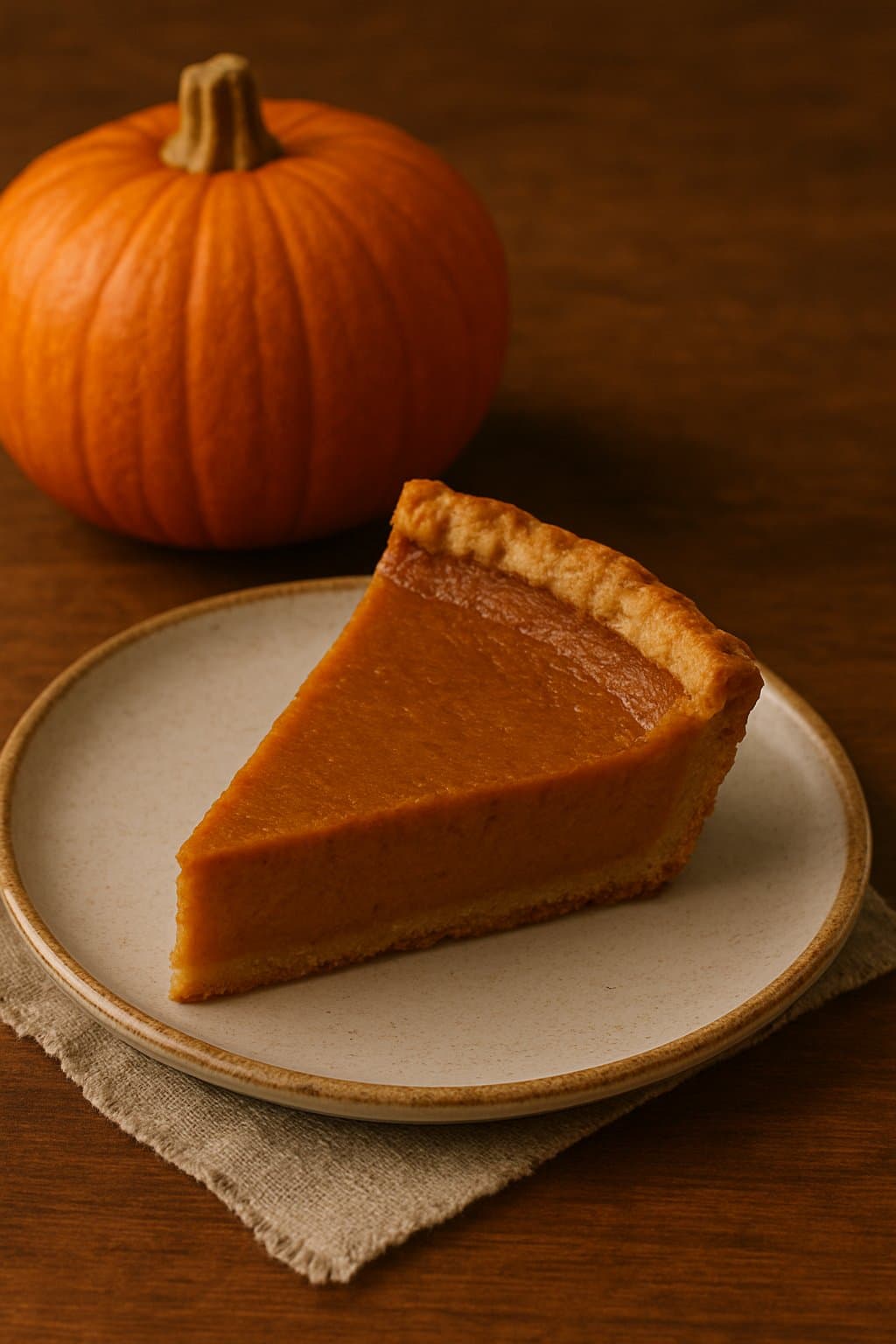The History and Origins of Pumpkin Pie: From Fields to Feast

The History and Origins of Pumpkin Pie: From Fields to Feast
Around the World in 80 Bakes: Stop #22 — United States
Pumpkin pie is a staple of American holiday tables, but its roots stretch far beyond the canned purée and pre-made crusts we know today. Like most heritage recipes, its story is layered — tied to indigenous agriculture, colonial improvisation, and centuries of culinary evolution.
Indigenous Beginnings
Pumpkins are native to North America. Long before colonists arrived, Indigenous peoples were cultivating and cooking various types of squash, including pumpkins. They didn’t make pie as we know it, but they did roast pumpkins, stew them, and mix them with maple syrup, honey, or nuts. Some tribes even filled hollowed-out pumpkins with milk and spices, then cooked them in hot ashes — an early ancestor of the custard-style filling we use today.
Colonial Adaptations
When European settlers arrived in the 1600s, they brought their pie-making traditions with them but had to adapt to the ingredients of the New World. Wheat flour was scarce, ovens were rudimentary, and dairy products were hard to come by. So they got creative.
Colonists likely learned from Native Americans how to use pumpkins in cooking. Early “pumpkin pie” recipes were more like baked puddings — mixtures of pumpkin, milk, honey, and spices poured into a hollowed pumpkin shell and baked in coals.
By the late 1600s, printed English cookbooks began including pumpkin-based recipes. One of the earliest known comes from Hannah Woolley’s 1670 book The Gentlewoman’s Companion, which mentions a “pumpion pie” flavored with rosemary, thyme, cinnamon, and cloves — baked in a pastry crust.
Rise of the Modern Pumpkin Pie
Pumpkin pie as we recognize it today — with a flaky crust and creamy, spiced filling — began to take shape in the 18th century. The ingredients became more consistent: mashed pumpkin, milk or cream, eggs, sugar, and warming spices like cinnamon, nutmeg, and ginger.
In 1796, Amelia Simmons published American Cookery, the first known American-authored cookbook. It featured two pumpkin pie recipes and marked a turning point: pumpkin pie was no longer just a makeshift dessert — it was a national one.
Thanksgiving Icon
By the 19th century, pumpkin pie had become linked to Thanksgiving, especially in New England. The connection solidified during the Civil War. In 1863, when Abraham Lincoln declared Thanksgiving a national holiday, many Northerners embraced pumpkin pie as a symbol of home, harvest, and union. Southerners at the time rejected it as a Yankee tradition — showing how even desserts can reflect deeper cultural divides.
Over time, though, pumpkin pie won nationwide favor. Its appearance in church cookbooks, women’s magazines, and canned pumpkin ads helped cement its place as a holiday must-have.
The Canned Era and Beyond
In 1929, the Libby’s company began producing canned pumpkin purée, making pumpkin pie easier and more consistent. By the mid-20th century, a classic American ritual was born: opening a can, mixing in eggs, milk, sugar, and spices, and pouring it into a store-bought crust.
But despite its convenience-era makeover, pumpkin pie has never lost its heritage character. It’s still a dish rooted in harvest, tradition, and adaptation — a dessert that’s traveled through centuries but stayed grounded in place.
Pumpkin pie is more than a dessert. It’s a record of agricultural knowledge, cultural exchange, and domestic creativity. From fireside gourds to Thanksgiving feasts, it tells the story of how people make do, make better, and pass it on.
Want to bake your own slice of history?
Share your thoughts
Did you find this history article interesting? Rate it below and let others know!